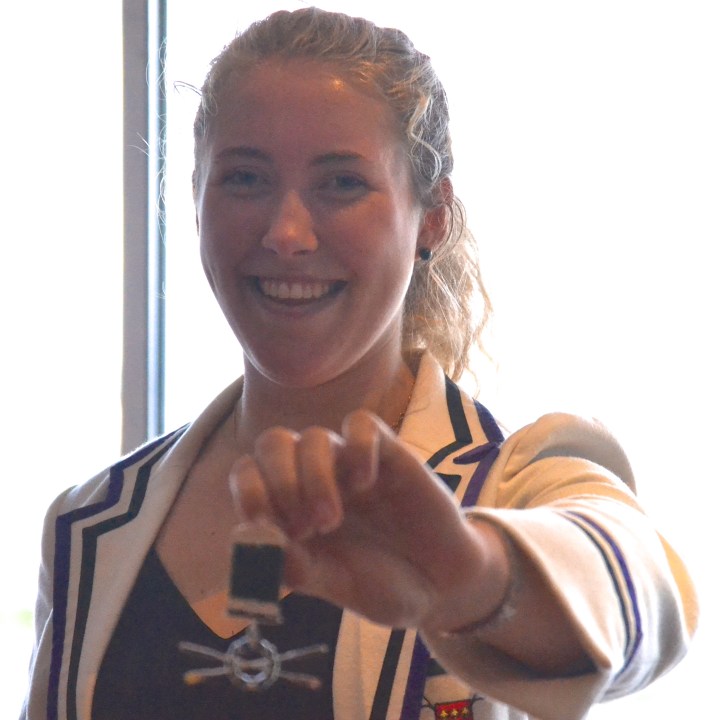
The 175th single sculling race held in 185 years for the pair of silver sculls presented in 1830 by Henry C. Wingfield ‘to be held by the best’ took place on the Putney to Mortlake course on 12 November. The event is organised and run by former winners (or ’Champions’ as they are called in Wingfield’s speak) and it also carries the titles of ‘The British Amateur Sculling Championship and The Championship of the Thames’. The day was also the occasion of the 9th Women’s Wingfields, a revival of the Women’s Amateur Rowing Championship first raced in 1927 and reactivated under the Wingfield’s banner in 2007 with the support of the Wingfield Family Society. ‘Hear The Boat Sing’ has covered the event since 2010 and its previous reports and a full history of the races can be read here. Below is a report by Chris Dodd on the 2015 races with photographs and captions by Tim Koch (rowing pictures tend to be ‘panoramic’ so click on them to enlarge).
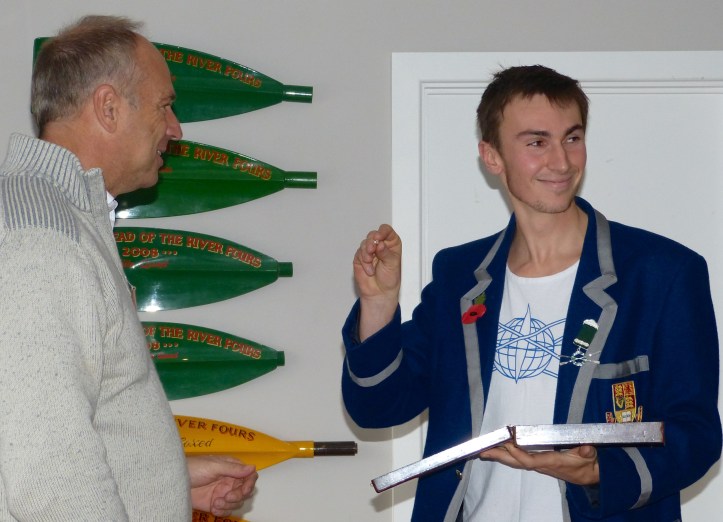
Chris Dodd writes:
Presenting the 2015 Wingfield Sculls to Tim Richards, Sir Steve Redgrave pointed out that winners are automatically elected to the committee. This is a wonderful thing about the Wingfields. It’s a severe test of sculling skills that has been running since 1830 (and from Putney to Mortlake since 1861), sustained and nurtured by those who have won it. Wingfields winners were aligning, umpiring, timekeeping and handing out refreshments, under the supervision of Wade Hall-Craggs (1993) who is Chief Cajoler and Keeper of the Archive. Greg Searle, in presenting the Women’s Wingfields to Mathilda Hodgkins-Byrne, said that there is ‘nothing like side-by-side racing in a single scull, and the Wingfields has a special place in my memory’. Redgrave, the five-times Olympic sweep champion who still maintains that his first love is sculling, pointed out that you learn as much from losing the Wingfields as in winning them. And there’s another thing about the Wingfields and their place in British rowing. Redgrave and Searle are not the only Olympic medallists among the company. This century Mahe Drysdale (ancestry qualifies him) and Alan Campbell have added their names to the plate, and the record is peppered with Brits who have made international marks. The women’s race, too, has Anna Watkins and Sophie Hosking among other distinguished winners.

Both races were fine matches and dramatic in different ways. Hodgkins-Byrne on the Middlesex station and Georgia Francis, who finished fourth together in the GB U23 double scull this year, clung close for three quarters of the distance. They vied for the lead to the Mile, each more concerned with the position of her rival than the tide. So much so that umpire Redgrave called them to move out from Surrey because he was worried about the buoy coming up at Harrods. Then at the Mile, Hodgkins-Byrne gave Steve – new to umpiring the Wingfields – a dodgy moment by stealing ahead and crossing towards Middlesex in front of Francis. The boats touched. Fortunately there was no disruption, and on the grounds that both scullers were off station, Redgrave breathed a sigh of relief.

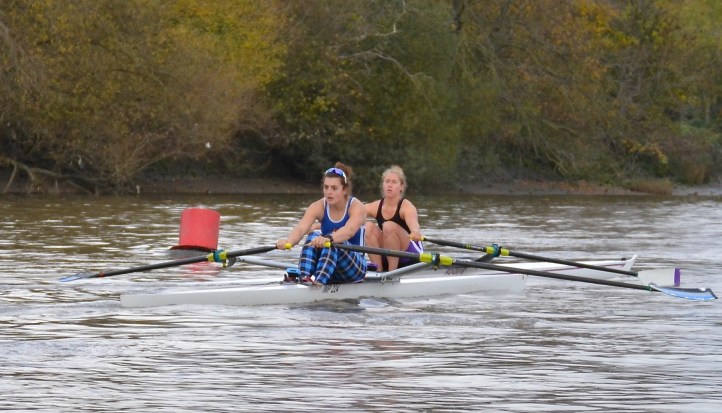


The move gave Hodgkins-Byrne more tide but presented Francis with the inside of the bend at Hammersmith. The boats remained close together to the bridge where Hodgkins-Byrne led right under the second lamp post by about three quarters of a length, and Francis was unable to use the Surrey bend to her advantage. A bit of clear water came between them by St Paul’s boathouse and from there Hodgkins-Byrne eeked out a larger gap as the two of them proceeded more or less in line ahead through grey water dappled with floating dead leaves. Gloomy grey clouds were separated from the water by a thin streak of blue sky and bright sunshine on the Chiswick horizon.

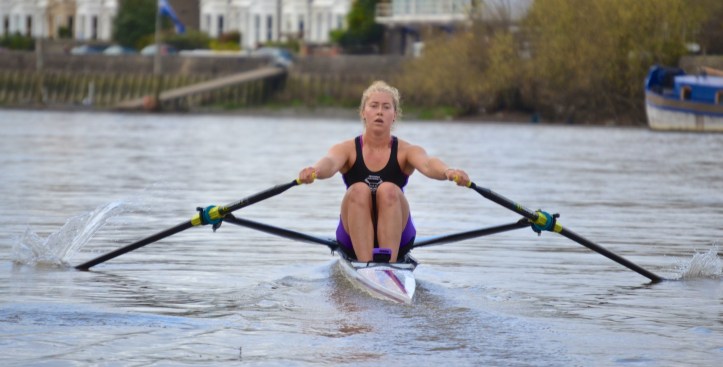


At Barnes Bridge, Hodgkins-Byrne had three or four lengths but Francis forced her to keep the pressure on to the finish in her first race on the Tideway. She almost beat the cyclist riding hell for leather up the towpath with the finishing flag.


This duel was a supreme, pure, gladiatorial match. The official result of the 9th Women’s Wingfields was:
1st: Mathilda Hodgkins-Byrne (Reading RC) 21.54.
2nd: Georgia Francis (Imperial College BC) 22.09.
The men’s race, with six starters, was a different sort of challenge for competitors and umpire alike. The race within the race was between two Imperial lightweights, Tim Richards (winner of the 2014 Wingfields) and John Hale, who were separated at the recent trials by a cigarette paper – to Hale’s advantage. Both have impressive track records.

Of the other four, Sean Blake of London RC is a Welsh international; Michael Lawrence of Quintin is an RAF policeman who has a long record in junior and U23 trials since 2010; Laurence Wells of Army RC won the Wyfolds at Henley with Thames in 2006; Niall Kenny is a former Irish international now based at Tideway Scullers.

The race was an absolute cracker, with the IC men leading off and Blake, Wells and Kenny in close pursuit. Blake held on to the Imperial scullers longest, but around the Mile, Richards sprang ahead of Hale and established a position where he could keep an eye on his five chasers. Gulls floated on the water and red and white cranes (of the construction variety) shone in sun on the Hammersmith skyline.

Richards had a six second lead over Hale at Hammersmith Bridge. Off Chiswick Eyot the wind got up and a sculler came down stream as the racers sought shelter under the bank round Duke’s Meadows. Richards extended his lead to 11 seconds at Barnes Bridge and 15 seconds, or about five lengths, at the finish.


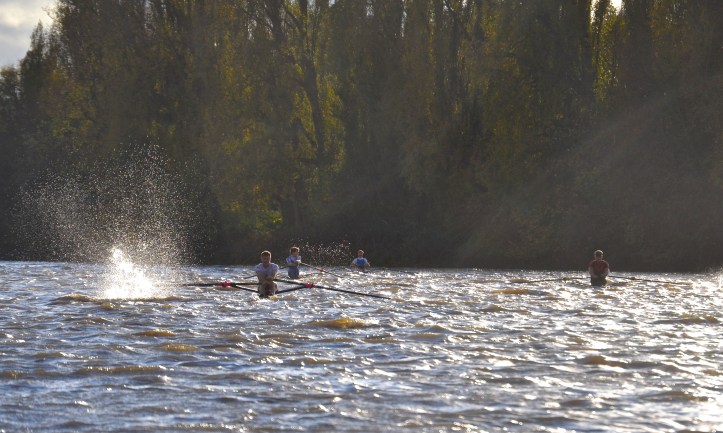
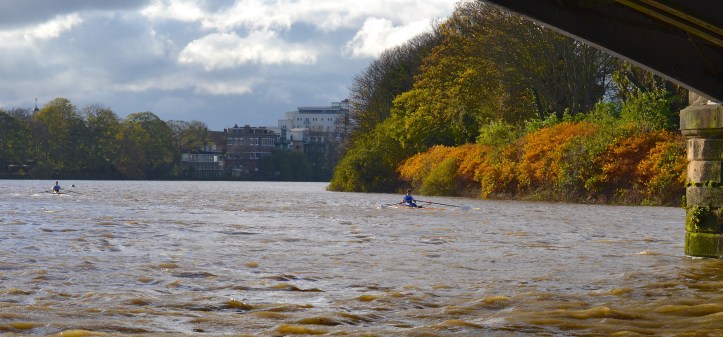
There were no problems for the umpire until drama struck at Barnes. Wells, a veteran of Helmand Province, flipped his boat while changing course to take the centre arch of the railway bridge. His pilot launch was quickly on the spot, but Wells righted his boat, got astride it and back into his seat, and finished the race in fifth place. Hale was second, Kenny third, Blake fourth and Lawrence sixth.


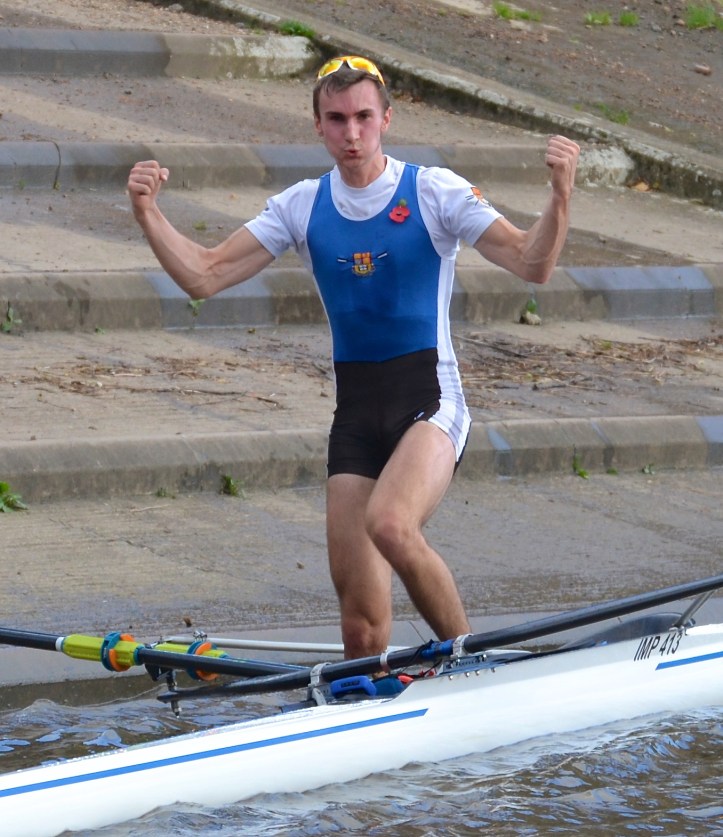
Official results of the 175th Wingfield Sculls:
1 Tim Richards (Imperial College) 21.40
2 John Hale (Imperial College) 21.55
3 Niall Kenny (Tideway Scullers) 22.11
4 Sean Blake (London RC) 22.54
5 Laurence Wells (Army) 23.46
6 Mike Lawrence (Quintin) 25.24
Intermediate times:
Mile – Richards 4.34; Hale 4.37; Kenny 4.44; Blake 4.48; Wells 4.40; Lawrence 4.52.
Hammersmith Bridge – Richards 7.58; Hale 8.04; Kenny 8.12; Blake 8.17; Wells 8.06; Lawrence 8.24.
Chiswick Steps – Richard and Hale NTT; Kenny 13.22; Blake 13.32; Wells 13.15; Lawrence 13.43.
Barnes Bridge – Richards 18.07; Hale 18.16; Kenny 18.36; Blake, Wells and Lawrence NTT.

Tim Koch’s postscript – for those that prefer moving pictures:
Rowing journalist Martin Gough has put a short video clip of each race on @martingough22
My edited video summery of the 2011 races is on YouTube here.
There are also two splendid cinema newsreel films of long past Wingfields online. One that I have flagged before is of the 1946 race between the eventual winner, Richard Burnell, and Bertram ‘Bert’ Bushnell. Of course, two years later ‘Bert and Dickie’ won a famous victory in the double sculls at the 1948 London Olympics. The bigger Burnell had previously beaten Bushnell in 1946 in the Diamond Sculls at Henley but the highly competitive smaller man never gave up in this Tideway encounter and sculled himself to the point of exhaustion. The final part of the film shows his limp body lifted onto the umpire’s launch at the finish (I have just noticed that the brief shot of the man with the finish flag at 1.03 is the Olympic Sculls winner of 1912 and Wingfields Champion of 1910, 1911 and 1912, WD ‘Wally’ Kinnear). A new discovery is film of the 1951 Wingfields which was won by Tony Fox, one of the greatest post-war British scullers. In this year he also won the Diamond Sculls and the Metropolitan Regatta’s ‘London Cup’, giving him sculling’s ‘Triple Crown’.

Nice to see John Hale sculling a wooden boat, I’m guessing a Carl Douglas. If so a good choice for the conditions.
Given he currently works for Carl Douglas, I’d say that’s a safe bet!